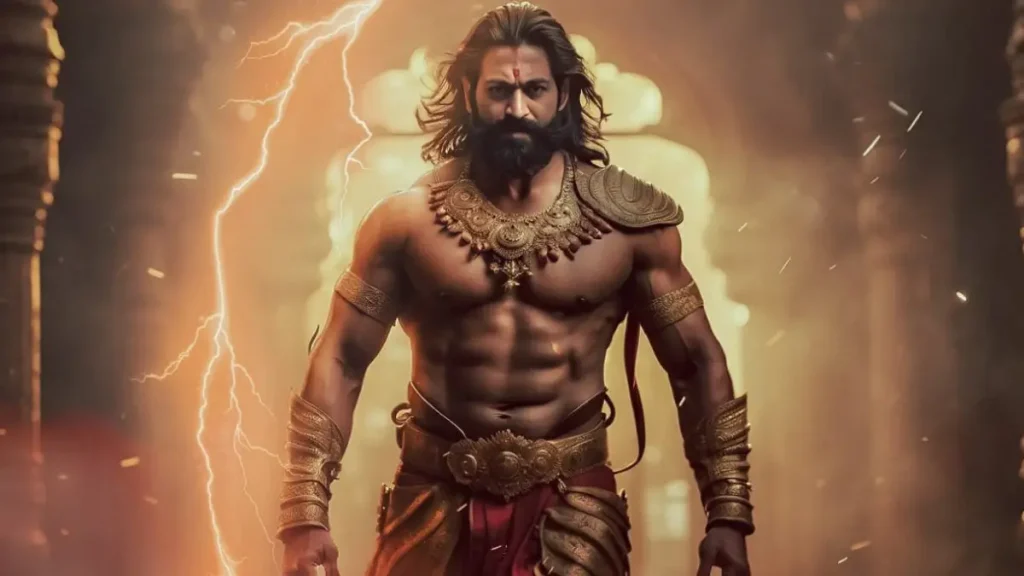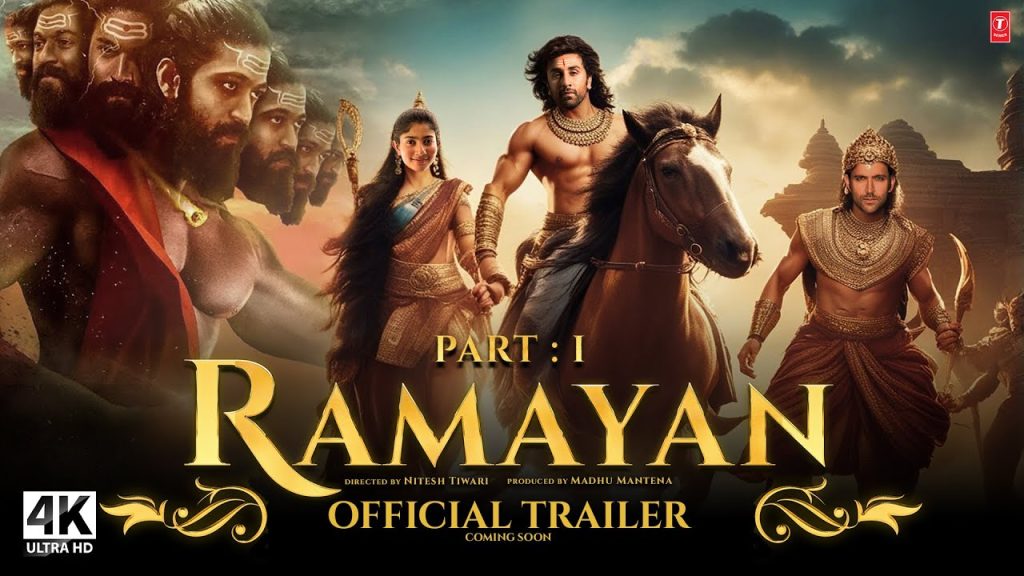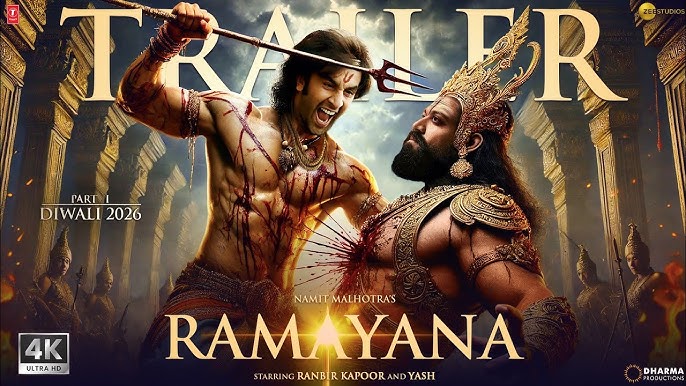Have you ever felt lost, searching for a moral compass in a world that seems to be spinning faster every day? We often look for guidance in self-help books or trending philosophies, but sometimes, the most profound answers are hidden in the stories we’ve known since childhood. For billions of people, that story is the Ramayana.
It’s more than just an ancient poem; it’s a living, breathing guide to navigating the complexities of life, duty, love, and loss. And in 2025, its echoes are louder than ever. We see it in our political discourse, our blockbuster movies, and in the grand temples that touch the sky. The recent inauguration of the Ram Mandir in Ayodhya is a powerful testament to this—a story carved in stone, refusing to be forgotten.
So, let’s journey back in time, not just to understand the story of Rama and Sita, but to discover why this epic feels so incredibly personal and relevant even today.

1. What is the Ramayana? A Story That Echoes Through Millennia
At its heart, the Ramayana (meaning “Rama’s Journey”) is one of the two major Sanskrit epics of ancient India, the other being the Mahabharata. Traditionally attributed to the sage Valmiki, it’s a grand narrative of about 24,000 verses that tells the story of Prince Rama of Ayodhya.
But calling it just a “story” feels like a disservice. It’s a foundational text for Hinduism, a cornerstone of culture across South and Southeast Asia, and a repository of profound philosophical and ethical wisdom. It explores the concept of dharma—a complex word that can mean duty, righteousness, cosmic law, or virtuous conduct. The entire epic is essentially a masterclass in navigating life’s dilemmas while upholding one’s dharma.
The plot is a whirlwind of romance, action, and divine intervention: a righteous prince is exiled, his beloved wife is abducted by a powerful demon king, and a great war ensues to rescue her. It sounds like the plot of a modern blockbuster, doesn’t it? Perhaps that’s why it has endured for so long.
2. The Core Characters: More Than Just Archetypes
The characters of the Ramayana are not flat, one-dimensional figures. They are complex, flawed, and deeply human, which is why we connect with them so strongly.
Rama: The Ideal Man (Maryada Purushottam)
Rama is the hero, the seventh avatar of the god Vishnu. He is the embodiment of dharma, the ideal son, husband, and king. Yet, he is not infallible. He is wracked with grief when Sita is taken and faces moments of doubt. His unwavering commitment to his word—even when it means 14 years of exile—is his defining trait. He represents the struggle to do the right thing, no matter the personal cost.
Sita: The Epitome of Purity and Strength
Sita is far more than a damsel in distress. She is the avatar of the goddess Lakshmi, a woman of immense courage, conviction, and resilience. She endures captivity in Lanka with unwavering dignity, refusing to bow to the might of her captor, Ravana. Her journey raises powerful questions about sacrifice, loyalty, and a woman’s place in society—debates that continue to this day.
Lakshmana & Hanuman: The Pillars of Loyalty
Have you ever had a friend or sibling who would drop everything to stand by you? That’s Lakshmana. Rama’s devoted younger brother chooses exile over the comforts of the palace without a second thought.
And then there is Hanuman, the mighty monkey-god. He is the ultimate symbol of bhakti (devotion) and selfless service. His leap across the ocean to Lanka is not just a physical feat; it’s a metaphor for what faith and determination can achieve. He is a superhero, a diplomat, and a humble devotee all rolled into one. 🚀
Ravana: The Shadow of Ego and Intellect
Ravana is one of the most fascinating antagonists in world literature. He isn’t a mindless monster. He is a brilliant scholar, a master of the Vedas, and a formidable king. His fatal flaw? His colossal ego (ahankara). His intellect is corrupted by his arrogance and desire, leading him to abduct Sita and, ultimately, cause his destruction. He serves as a timeless warning: knowledge without wisdom is a dangerous thing.
3. The Unfolding Epic: A Journey Through the Seven Kandas
The Ramayana is traditionally divided into seven books, or Kandas, each detailing a different phase of Rama’s journey.
- Bala Kanda (Book of Childhood): Details the birth, childhood, and marriage of Rama to Sita.
- Ayodhya Kanda (Book of Ayodhya): The drama begins. Queen Kaikeyi, influenced by her maid, demands that her son Bharata be crowned king and that Rama be exiled for 14 years.
- Aranya Kanda (Book of the Forest): Life in exile. This is where Sita is abducted by Ravana, setting the stage for the central conflict.
- Kishkindha Kanda (Book of the Monkey Kingdom): Rama and Lakshmana meet Hanuman and the monkey king Sugriva, allying to find Sita.
- Sundara Kanda (Book of Beauty): This book is largely focused on Hanuman’s adventures—his journey to Lanka, finding Sita, and his confrontation with Ravana. It’s a beautiful and inspiring section.
- Yuddha Kanda (Book of War): The epic climax. The battle between Rama’s army and Ravana’s forces culminated in Ravana’s defeat and Sita’s rescue.
- Uttara Kanda (Book of the Epilogue): A controversial and later addition, this book details Rama’s life after returning to Ayodhya, the banishment of Sita, and the birth of their sons, Luv and Kush.
4. Beyond Valmiki: The Many Voices of the Ramayana
One of the most incredible things about the Ramayana is that it’s not a single, monolithic text. It’s a tradition that has been retold, reinterpreted, and reimagined countless times across Asia.
The 16th-century Ramcharitmanas by Tulsidas, written in the Awadhi dialect of Hindi, is the most popular version in North India, emphasizing devotion (bhakti). In the south, Kambar’s Kamba Ramayanam in Tamil is a literary masterpiece.
Go further east, and you’ll find Thailand’s national epic, the Ramakien, or Cambodia’s Reamker. Each version reflects the local culture, adding new characters and plot twists, proving that the story’s core themes are universally resonant.
5. Why the Ramayana is More Relevant Than Ever in 2025
If you think the Ramayana is just a story for religious sermons, you haven’t been paying attention. In 2025, its influence is potent and visible.
The Socio-Political Epicenter: Ayodhya’s Ram Mandir
The inauguration of the Ram Mandir in Ayodhya in early 2024 was arguably one of the most significant cultural events in modern Indian history. As reported by major outlets like The Hindu and NDTV, the event drew global attention. In 2025, the temple is not just a place of worship; it’s a symbol of national identity for millions and a central point in political discourse. It has physically manifested the epic onto the landscape of modern India, making its story impossible to ignore.

Pop Culture’s Favorite Epic
Filmmakers and showrunners can’t get enough of the Ramayana. From Ramanand Sagar’s iconic 80s TV show to modern interpretations and big-budget films, the story is constantly being retold. These adaptations, while sometimes controversial, spark national conversations and introduce the epic’s dilemmas to a new generation. They force us to ask: What does it mean to be a hero today? What does dharma look like in a digital world?
A Guide for Modern Morality
In a world grappling with ethical crises—from corporate greed to political polarization—the Ramayana offers a framework. The concept of Ram Rajya (the rule of Rama) is often invoked as a metaphor for a just and equitable society. While the interpretation of this ideal is debated, its core principles of governance, responsibility, and public service remain a powerful aspiration.
6. Timeless Lessons for a Modern World
Beyond the spectacle and the politics, the Ramayana’s true power lies in its lessons.
- The Primacy of Dharma: More than just “duty,” dharma is about living in alignment with your true purpose. Rama’s life teaches us that adhering to our principles, even when it’s excruciatingly difficult, leads to inner peace and integrity.
- The Power of Devotion (Bhakti): Hanuman shows that unwavering faith in a higher purpose can give you the strength to move mountains (or leap across oceans!). This isn’t just about religious faith; it’s about believing in something bigger than yourself.
- The Perils of Arrogance (Ahankara): Ravana had everything—power, wealth, knowledge. But his ego was his undoing. It’s a powerful reminder to stay humble and that intellect without empathy can be destructive.
- The Strength in Unity: Rama couldn’t have defeated Ravana alone. He needed his brother, his wife’s resilience, and an army of monkeys and bears. It’s a beautiful metaphor for how our strength lies in our relationships and communities.
Conclusion
The Ramayana is a mirror. In it, we see our struggles, our flaws, and our potential for greatness. It’s an ancient song that still plays in the heart of India, its melody shaping our culture, our art, and our understanding of right and wrong.
Whether you see it as history, mythology, or a divine allegory, its narrative has an undeniable power. It challenges us to be better sons and daughters, better leaders, and better human beings. The story of Rama’s journey is, in many ways, our journey to find our way back home.
What do you think? What part of the Ramayana resonates most with you in today’s world? Let me know in the comments below! 👇
Frequently Asked Questions (FAQs)
1. Who originally wrote the Ramayana? The original Ramayana is attributed to the sage Valmiki, who is considered the first poet (Adi Kavi) in Sanskrit literature. His version is the oldest and most authoritative.
2. What is the central message of the Ramayana? The central message is the triumph of dharma (righteousness) over adharma (unrighteousness). It explores this theme through the ideals of duty, sacrifice, devotion, and the consequences of one’s actions (karma).
3. Is the Ramayana a true story? This is a matter of belief. For millions of Hindus, it is a historical and spiritual truth (itihasa). For scholars, it is a foundational epic poem that contains deep philosophical wisdom, regardless of its literal historicity. Archaeological and textual studies continue to explore its origins.
4. What are the seven books (Kandas) of the Ramayana? The seven books are: Bala Kanda (Childhood), Ayodhya Kanda (Ayodhya), Aranya Kanda (Forest), Kishkindha Kanda (Monkey Kingdom), Sundara Kanda (Beauty), Yuddha Kanda (War), and Uttara Kanda (Epilogue).
5. Why is the Ramayana still important in 2025? Its importance is multifaceted. Culturally, it inspires art, film, and literature. Socially and politically, its ideals and characters, particularly around the site of Ayodhya, are central to modern Indian identity and discourse. Spiritually, it continues to be a moral guide for millions on how to live a life of integrity and purpose.


 The Conjuring: Last Rites – Your Full Guide to the Final Scary Movie
The Conjuring: Last Rites – Your Full Guide to the Final Scary Movie
 The Conjuring: Last Rites Release Date in India – Get Ready for the Final Scare
The Conjuring: Last Rites Release Date in India – Get Ready for the Final Scare
 One Piece Season 2 on Netflix: Release Date and All the Fun Details
One Piece Season 2 on Netflix: Release Date and All the Fun Details
 Where to Watch “Law and the City” K-Drama
Where to Watch “Law and the City” K-Drama
 Spider-Man 4: Brand New Day is Coming Tom Holland’s New Suit, Cast, and Release Date Revealed
Spider-Man 4: Brand New Day is Coming Tom Holland’s New Suit, Cast, and Release Date Revealed